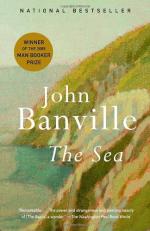|
This section contains 4,545 words (approx. 16 pages at 300 words per page) |

|
SOURCE: "The Sea in Selected American Novels of Slave Unrest," in Journal of American Culture, Vol. 10, No. 2, Summer, 1987, pp. 43-8.
In the following essay, Sadler looks at depictions of the sea in several slave novels—as an avenue of escape, a symbol of oppression, or "a metaphor for humans ' enslavement of their fellows and themselves. "
The sea and streams of water in general play an important role in American "novels of slave unrest." Two of the best of the genre—Harriet Beecher Stowe's Dred; A Tale of the Great Dismal Swamp (1856) and William Styron's The Confessions of Nat Turner (1966), both by White authors—treat the sea extensively, on both literal and figurative levels, and constantly link the swamp-as-temporary-haven theme with ultimate escape by the sea. Perhaps the best of the group by a Black author, Arna Bontemps' Black Thunder (1936) merges the forces of Nature, with water one...
|
This section contains 4,545 words (approx. 16 pages at 300 words per page) |

|


